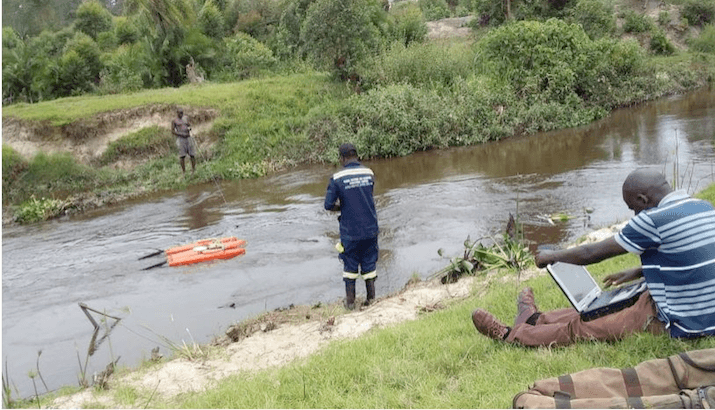KAMPALA- Uganda Manufacturer’s Association (UMA) on Tuesday September 3rd 2024 unveiled sponsors for their annual Trade Fair starting on October 2 and ending October 10.
The Trade Fair is part of a process that UMA started in 1988, to construct a culture of industrialization that not only provides Ugandan households with basic consumer goods, but also contributes to the national GDP and jobs.
The Platinum sponsors that have been unveiled are Total Energies and Roofings Group, while the silver sponsors are Stanbic Bank and Smartec (the sellers of Hisense electricals). Tembo Steels, MMI Integrated Steels, Pro Bio, K-Roma and Good Briquette Initiative Limited are the Bronze sponsors.
Together these sponsors are supporting UMA to hold the 30th Uganda International Trade Fair (UGITF). Started in 1992, as a way for Uganda’s nascent manufacturing to supply the public with scarce commodities and household items, the Trade Fair, evolved two years later, to become International by 1994.
Uganda had just come out of over a decade of instability that had destroyed the country’s manufacturing capacity, so the decision to go international also supported local manufacturers and traders in the creation of partnerships that would years later reduce dependence on imported commodities.
Eddie Senkumba the UMA Chairman for Communication and Events, who is a director at one of the early members of UMA observes that at the start of these trade fairs, Uganda relied heavily on imports, with a wide range of products such as, soft drinks, alcohol, clothing, cooking oils, as well as plastics, all being brought in from abroad.
“Determined to change this narrative, UMA organized its inaugural exhibition, the Uganda International Trade Fair (UGITF), in 1992 to promote local manufacturers,” he says.
Dr Ezra Muhumuza Rubanda notes that since the 1990s, manufacturers have covered the scarcity gap; significantly.
“There is no scarcity of products in this country, actually, products find people in their household but again we need continue holding Trade Fairs, because they are a source of feedback,” he says.
He notes that as UMA continues on its trajectory to build a culture of industrialization, talking and collecting feedback from consumers has become an important aspect of UGITF.
Director Senkumba buttresses this point noting that through events like Uganda International Trade Fair, UMA members display their merchandise in a fun and easy to access environment, where customers are able to learn about production processes and the authenticity of the exhibited products.
“Such interactions help bridge the information gap so that consumers are better equipped to join the fight against counterfeit goods on the market. For a small fee, the opportunity for brand exposure and interaction with an average of over 300,000 show goers is also open to international and local nonmember entrepreneurs,” says Senkumba.
Dr Muhumuza Rubanda adds that the UGITF is also an opportunity for people who would want to be linked with manufacturers, as agents for businesses. At UGITF manufacturers will be able meet the traders that would want to be agents of some of these products and distributers.
Beyond the opportunity for interaction with consumers and aspiring entrepreneurs that want to become agents, Dr Muhumuza Rubanda explains that the UGITF is also contributing to the country’s agenda to increase industrialization and take advantage of Uganda’s resources.
“We want to produce for the region; we want to produce for the continent, which makes it a generational issue” he says.
He adds that manufacturers and Ugandans in general are working to build a culture of industrialization that goes beyond the one producer of goods focusing on their own market and growth.
This culture of contributing to improving the welfare of Ugandans has so far resulted in close to two million direct jobs from the manufacturing sector.
Director Senkumba explains that in addition to the jobs, milestones since the first trade fair include increased growth of manufacturing output from $16.6 million in 1992 to $7.4 billion now. The manufacturing sector also contributes 23 % of the tax revenue in Uganda and directly employs close to 2 million people.
As a way to build on this success, this year’s UGITF will include new innovations in the Women, Agriculture, and Education pavilions, addressing some of Uganda’s most pressing challenges. Notably, with Uganda boasting the second-youngest population globally, we recognize the urgent need to tackle high unemployment rates among our youth.
“UMA’s contribution to solving the high unemployment rates at this year’s UGITF will be done through the education pavilion,” says Director Sekumba.
The education pavilion will do several things, which include:
- A desk to match manufacturers with job seekers. This will cover those trained in the formal sector looking for jobs and experienced informal sector workers such as those in Katwe. In the past members of UMA have struggled with formally educated interns unable to do work with machines in their factories. The jobs desk will help alleviate this challenge.
- It will also provide career guidance and training for job seekers, making them suitable for employment by our members.
- There is also an opportunity for interaction with Uganda’s forays into the fourth industrial revolution. We shall have mechatronics and robots, which should provide both educative and tourist value.
- The desk will provide industrial career guidance for those who need it and would like to start or plan a career in the manufacturing sector.
- There will also be a debate about BUBU for secondary school students. We hope to increase the population proportion choosing locally manufactured goods over the imported ones. In effect, we are supporting the Buy Uganda Build Uganda (BUBU), by creating a tribe of young people that interact with Ugandan goods early on in life, which should among other things build trust and relationships that can last a lifetime.
- We’re excited to announce a quiz competition designed specifically for primary school children, complete with inspiring prizes and engaging activities. This interactive event aims to bridge the gap between exhibitors and young minds, fostering a connection that will inspire and educate.

The Women’s Pavilion is another initiative this year, a dedicated hub designed to empower female entrepreneurs and business owners. This inclusive space will offer a comprehensive range of resources and support services, including:
- Access to affordable financing solutions, tailored to meet the unique needs of women-led businesses.
- Guidance on business registration and formalization, simplifying the process and promoting legitimacy
- Mentorship programs, pairing participants with experienced entrepreneurs and industry experts who can share valuable insights and expertise
By providing a supportive ecosystem and connecting women to vital resources, we aim to bridge the gender gap in entrepreneurship, foster economic growth, and unlock the full potential of women-led businesses.
A revamped Business Matchmaking Program, facilitating targeted connections and partnerships (B2B) in interactive Industry Forums, will feature expert panels and discussions on key sector trends. By facilitating targeted B2B meetings and networking opportunities, we aim to spark meaningful partnerships, drive business growth, and unlock new opportunities for collaboration and investment. Join us for thought-provoking conversations and unparalleled access to industry leaders, innovators, and decision-makers

The agriculture pavilion: One of the most exciting additions to this year’s trade fair is the Agricultural Pavilion which is dedicated to training farmers, SACCOs, and Cooperatives in value addition and agro-processing. Uganda has a total of 33,000 saccos and cooperatives, which form the backbone of many government programs, including the Parish Development Model (PDM). Through equipping these groups with the skills to transform raw agricultural products into higher-value goods, we aim to unlock new economic opportunities, improve livelihoods, and drive rural development. The Agricultural Pavilion will serve as a hub for knowledge sharing, innovation, and collaboration, paving the way for a more prosperous and resilient agricultural sector in Uganda
New products: we are expecting a wide range of new products which include locally made, smart phones, smart watches, smart Televisions, Electrical meters, Electric motors bikes, Rechargeable batteries, new irrigation systems, new water treatment technology, Improved flour machinery and so much more.
To make sure that women are participating fully, this UGITF will have children’s play area, where children can play is a safe space even as their parents take part. This part of UMA’s contribution towards increasing the number of women in the entrepreneurial space.







